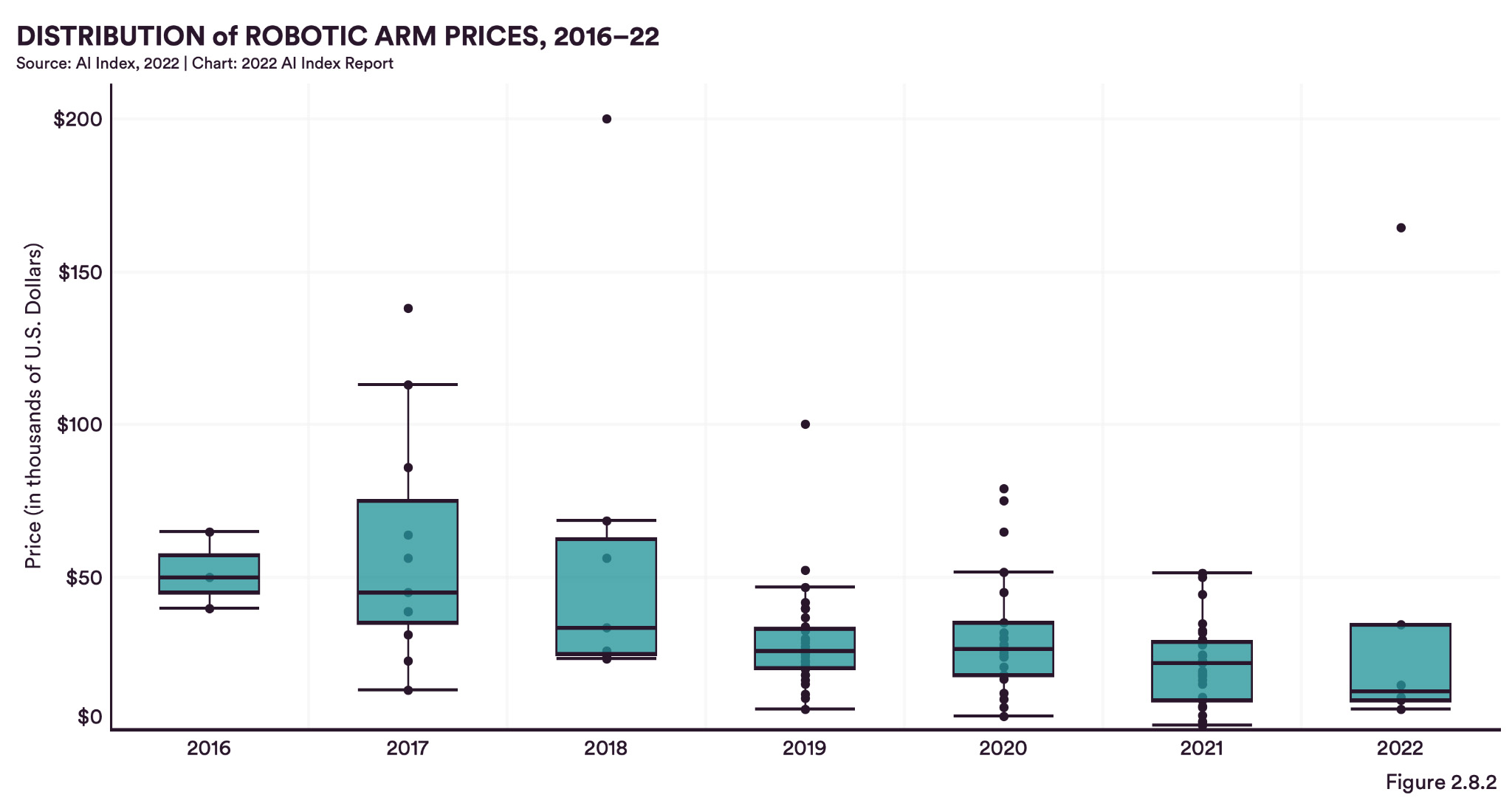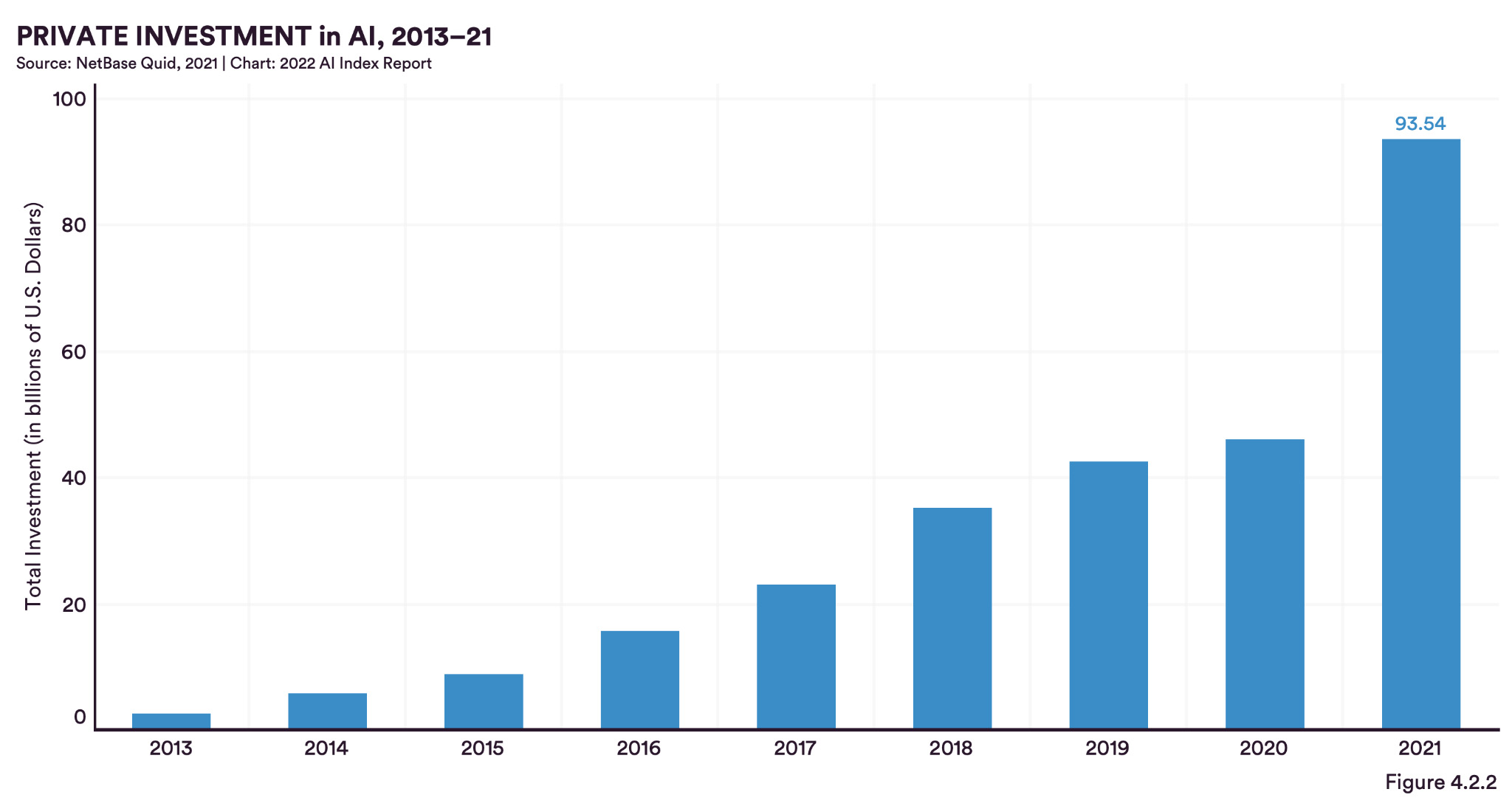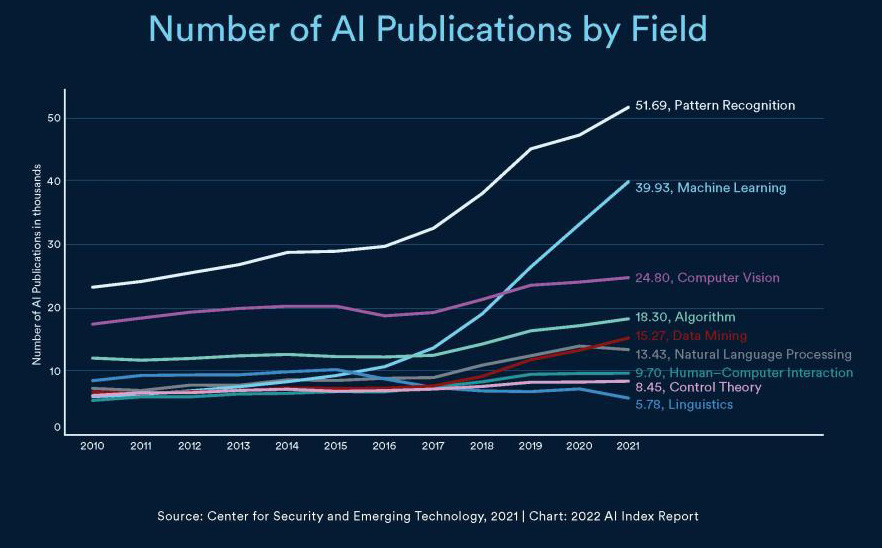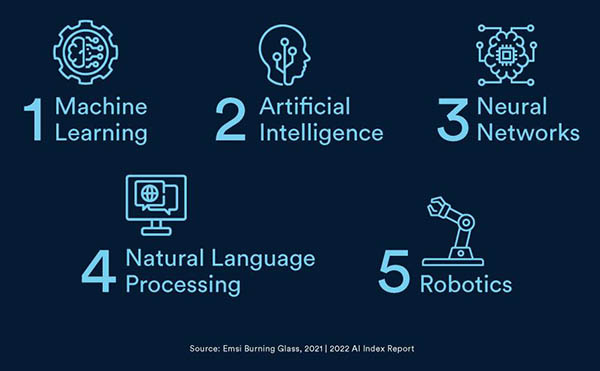Investments in artificial intelligence and robotics have continued to grow worldwide, according to a new report from the Stanford Institute for Human-Centered Artificial Intelligence. As more industries adopt AI and automation, concerns have arisen about ethics and potential regulation, said the report.
“2021 was the year that AI went from an emerging technology to a mature technology—we're no longer dealing with a speculative part of scientific research, but instead something that has real-world impact, both positive and negative,” said Jack Clark, co-chair of the AI Index. “This year's AI Index tells us that AI is being integrated into the economy and the effects of it are beginning to go global across research, deployment, and even funding.”
The Stanford Institute for Human-Centered Artificial Intelligence (HAI) today released the “AI Index Report 2022.” It studied recent investments, research and development activity, technical performance, ethics discussions, job postings, and bills passed into law about AI.
The AI Index Steering Committee, an interdisciplinary group of experts from across academia and industry, led the initiative. The stated goal of the study is “to be the world’s most credible and authoritative source for data and insights about AI.”
Robot arms become more affordable
Stanford HAI also shared the results of an online survey conducted between December 2021 and February 2022, with 101 professors from 43 universities responding.
Robot arms are becoming cheaper, according to the AI Index survey. “The median price of robotic arms has decreased fourfold in the past six years—from $42,000 per arm in 2017 to $22,600 in 2021,” it said. The report noted that this price decline has helped robotics research become more accessible, especially since academics can get educator discounts. Robotics skills were among the top five requested by employers.
Developments in machine learning have helped robots to optimize manufacturing tasks and autonomous vehicles to navigate, the report said. Survey respondents said that they use both both deep learning and reinforcement learning. Specifically, 67.0% of professors reported using deep learning, and 46% said they use reinforcement learning.
Robotics and machine vision were among the most popular specialties of Ph.D. graduates in 2020, Stanford HAI said. Other areas of interest included motion planning, the Robot Operating System (ROS), drives and motors, and simultaneous localization and mapping (SLAM).

AI investments continue to climb
Private investment in AI totaled about $93.5 billion in 2021, more than double the amount of investment in 2020. However, the number of newly funded AI businesses dropped from 1,051 companies in 2019 and 762 startups in 2020 to 746 companies in 2021.
In 2020, there were four funding rounds worth $500 million or more; in 2021, there were 15, said the “AI Index Report.”
Top AI funding recipients included autonomous vehicle and data management companies Databricks, Beijing Horizon Robotics Technology, Oxbotica Ltd., and Celonis, the report said.

AI capabilities improve
In 2021, the research community took more interest in computer vision subtasks such as medical image segmentation and masked-face identification, said the “AI Index Report.”
For example, only three research papers tested systems against the Kvasir-SEG medical imaging benchmark prior to 2020, 25 research papers did so in 2021. “Such an increase suggests that AI research is moving towards more direct, real-world applications,” it said.
The report added that AI is approaching human performance levels in basic reading comprehension and abductive natural-language inference, and work is continuing on more generalized abilities.
“In the last two years, AI systems have also improved by 129% on more general reinforcement learning tasks (Procgen) in which they must operate in novel environments,” it said. “This trend speaks to the future development of AI systems that can learn to think more broadly.”

Ethics concerns grow
At the same time, the number of bills around AI that were passed into law grew from one in 2016 to 18 in 2021, with Spain, the U.K., and the U.S. each adopting three. Discussions about bias and ethical use of AI mostly occurred in the Anglophone world, the study noted.
The larger and more capable an AI system is, the more likely it is to produce outputs that conflict with society's values, said Jack Clark, co-director of the AI Index Steering Committee. “This is the challenge that AI faces,” he said. “We’ve got systems that work really well, but the ethical problems they create are burgeoning.”
Stanford HAI worked with Bloomberg Research, the Center for Security and Emerging Technology at Georgetown University, the Computing Research Association, and Emsi Burning Glass. Other collaborators included Intento, LinkedIn, McKinsey Global Institute, MLCommons, NetBase Quid, and Women in Machine Learning.
About the Author
Follow Robotics 24/7 on Linkedin
Article topics
Email Sign Up
















